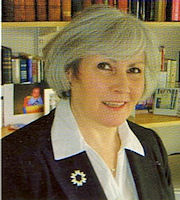Johan Findlay: A history of women on the Justice of the Peace bench

Johan Findlay
Johan Findlay JP OBE looks at the history of women on the JP bench.
It is 100 years since the death of Sir Hugh Munro, the Scottish mountaineer best known for listing and climbing mountains in Scotland over 3,000 feet, known now as Munros.
Anther mountain of far vaster proportions was finally surmounted in the same year when women were allowed to become solicitors and judges.
This year, 2019, we celebrate the centenary of women being appointed as Justices of the Peace and taking their place on the bench. It only took 410 years from the inception of the Justice of the Peace in Scotland in 1609!
In these ‘enlightened’ days, it is hard to remember that discrimination against women – along with many other groups of people - was generally accepted. For nearly 300 years in Scotland, 600 in England, only men could be appointed as Justices and it took the Suffragettes, a World War and the eventual common sense of Members of Parliament, to create the Sex Disqualification (Removal) Act 1919.
Women historically could not even appear in court other than as the accused as there was a general belief that “…women and children told lies”.
Of course, it was not only the bench which was barred to women, as prior to the act, having married, a woman could not continue to work in many of the professions. Being handed your notice was the wedding gift from many employers including the civil service.
The act stated: “A person shall not be disqualified by sex or marriage from the exercise of any public function, or from being appointed to or holding any civil or judicial office or post, or from entering, or assuming or carrying on any civil profession or vocation or for admission to any incorporated society (whether incorporated by Royal Charter or otherwise) and a person shall not be exempted by sex or marriage from the liability to serve as a juror.”
Although women could be elected as councillors in burghs or counties in Scotland, they had been specifically barred from being ex officio justices even when they were chairmen of Parish Councils or District Committees, positions which usually carried such ex officio justice appointments. Up until 2000, local councillors could appoint up to 25 per cent of their members as justices, known as ex-officio justices.
In fairness, it should be noted that until 1906, there was a property qualification for justices – all male at that time. This was a requirement that to become a justice of the peace, the appointee had to own a certain amount of property with an income of at least £100 per year.
It was of course only a year before, in 1918 that women – over 30 years old– were allowed to vote in general elections and not till 1928 was the age barrier changed to 21. All men over 21 could vote in parliamentary elections.
The selection of male justices of the peace in those far off days was through recommendation of the Lord Lieutenant to the Lord Chancellor but as a result of a Royal Commission of 1910, Advisory Committees were instituted in every county to encourage a wider range of men to join the commission. It was not until the end of 1919 that women were actually appointed as justices, although the composition of the bench was destined to remain predominantly male for many decades. Efforts to increase the numbers of women on the bench were made but were not particularly successful until the last two decades of the 20th century.
The appointment of women to the JP bench was a question raised by the 1910 Commission to which the all-male respondents answered that they did not think the court was a fitting place for a woman. Only one considered that female justices might be suitable but “they would have to retire for certain cases”. What these cases might be was not explained. This attitude is not particularly surprising in 1910 when ‘ladies’ were protected from the seamier side of life, but in the report to the Scottish Home and Health Department in 1988, one potential nominator for the ‘Perth and Kinross justices’ experiment’ admitted that he “never thought of women for that sort of thing”.
The first woman appointed as Justice of the Peace in Scotland was Miss Elizabeth Haldane C.H. LL.D. to whom James Thomson dedicated the 1920 Justices’ Handbook. An eminent woman, author of several books, she was biographer, philosopher, suffragist, nursing administrator and social welfare officer and indeed a notable gardener. In 1918, she was awarded Companion of Honour.
The part played by women on the bench increased considerably when the Justice of the Peace juvenile courts were established in 1932 which required at least one of the three judges to be a woman.
Visit the Scottish Legal News website to read the rest of this article









